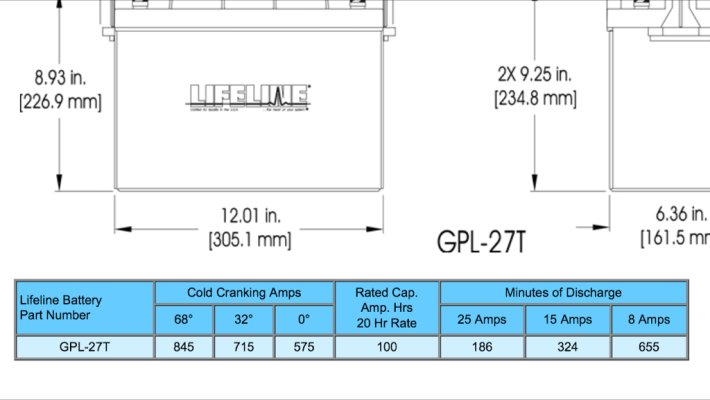cardude01
Guru
- Joined
- Nov 26, 2012
- Messages
- 5,290
- Location
- USA
- Vessel Name
- Bijou
- Vessel Make
- 2008 Island Packet PY/SP
My boat has 5-Lifeline GPL 27T batteries that are 8 years old, and I'm shopping around for replacements.
Here are the specs on the Lifelines
Cold Cranking Amps845
Rated Cap.Amp. Hrs 20 Hr Rate100
Minutes of Discharge
25 Amps 186
15 Amps 324
8 amps 655
The cheapest I can find these Lifelines are $289 shipped to me. Is there a cheaper but still good alternative to these Lifelines? I want to stay with AGM because the charge system is set up for that and I don't think I will keep up with watering flooded cells.
Here are the specs on the Lifelines
Cold Cranking Amps845
Rated Cap.Amp. Hrs 20 Hr Rate100
Minutes of Discharge
25 Amps 186
15 Amps 324
8 amps 655
The cheapest I can find these Lifelines are $289 shipped to me. Is there a cheaper but still good alternative to these Lifelines? I want to stay with AGM because the charge system is set up for that and I don't think I will keep up with watering flooded cells.


 I'm watching this thread closely since I'm facing similar choices.
I'm watching this thread closely since I'm facing similar choices. 